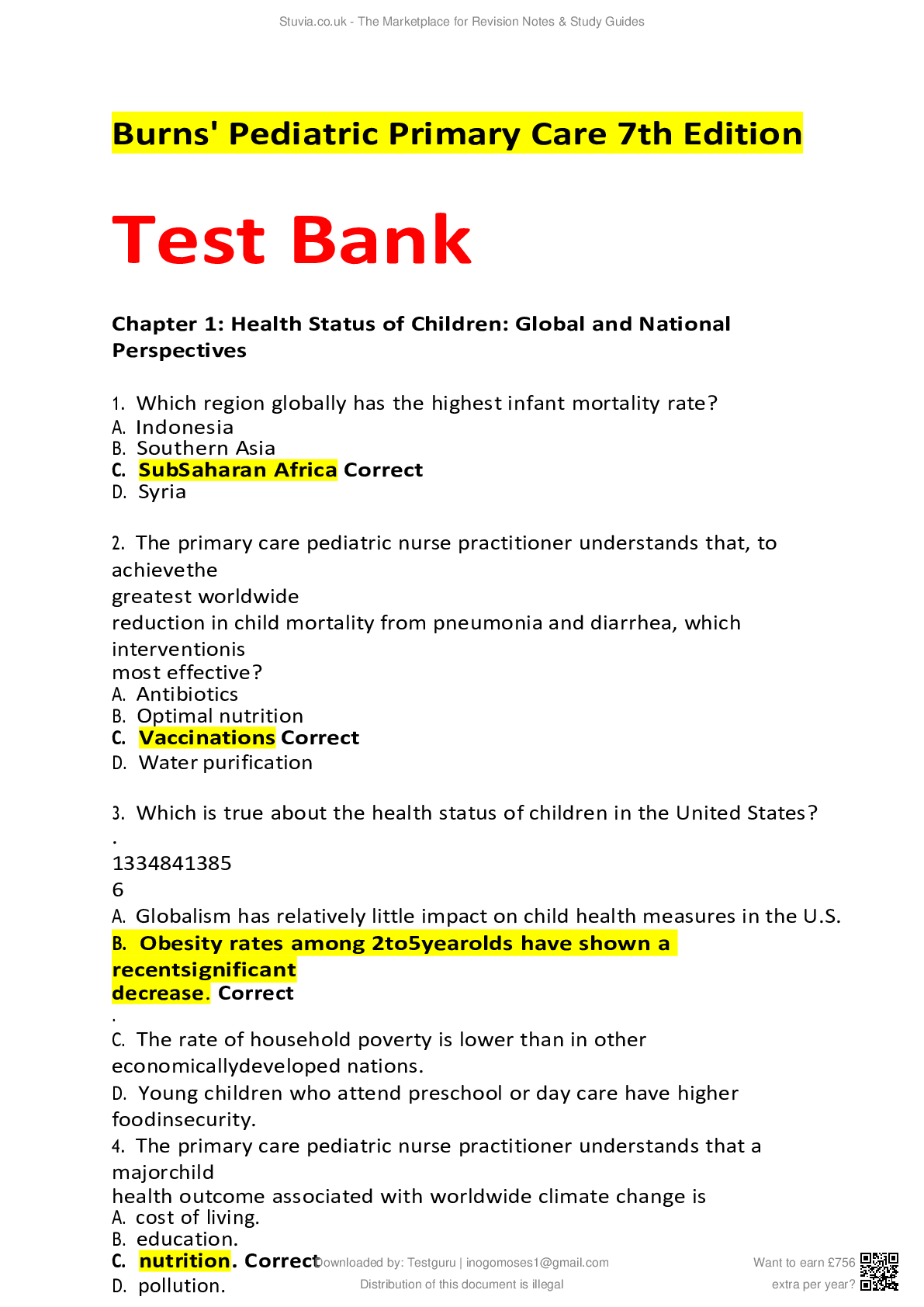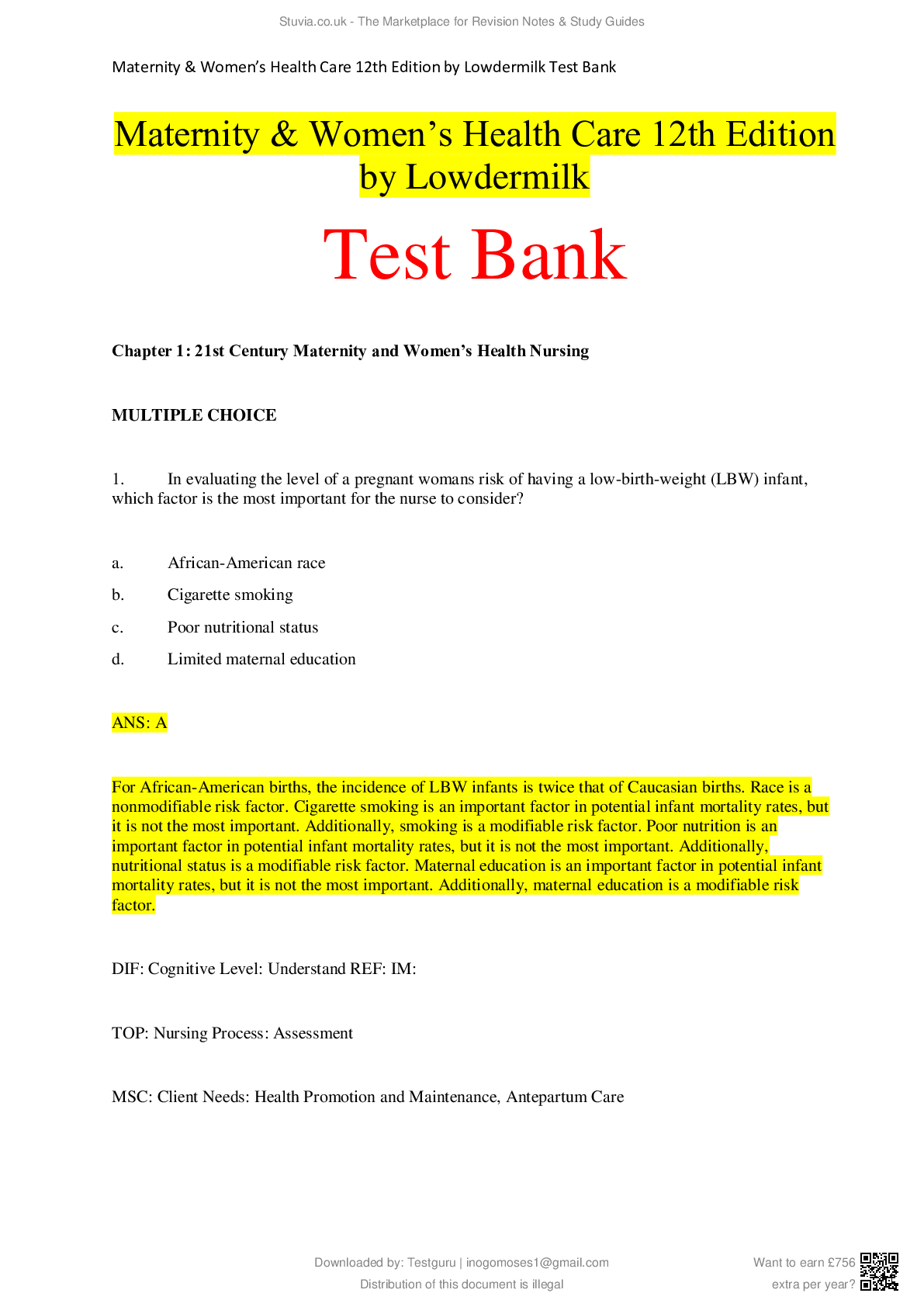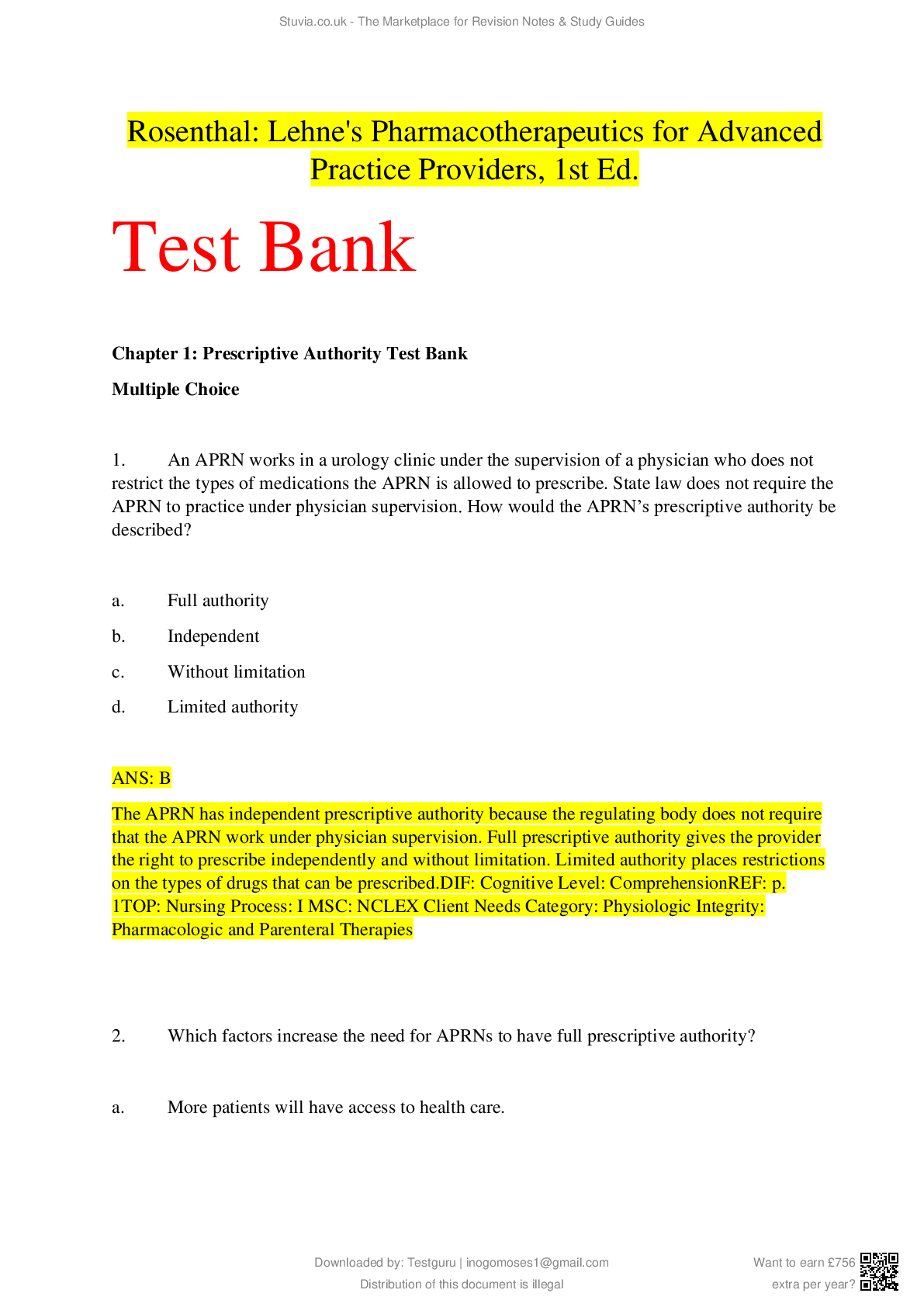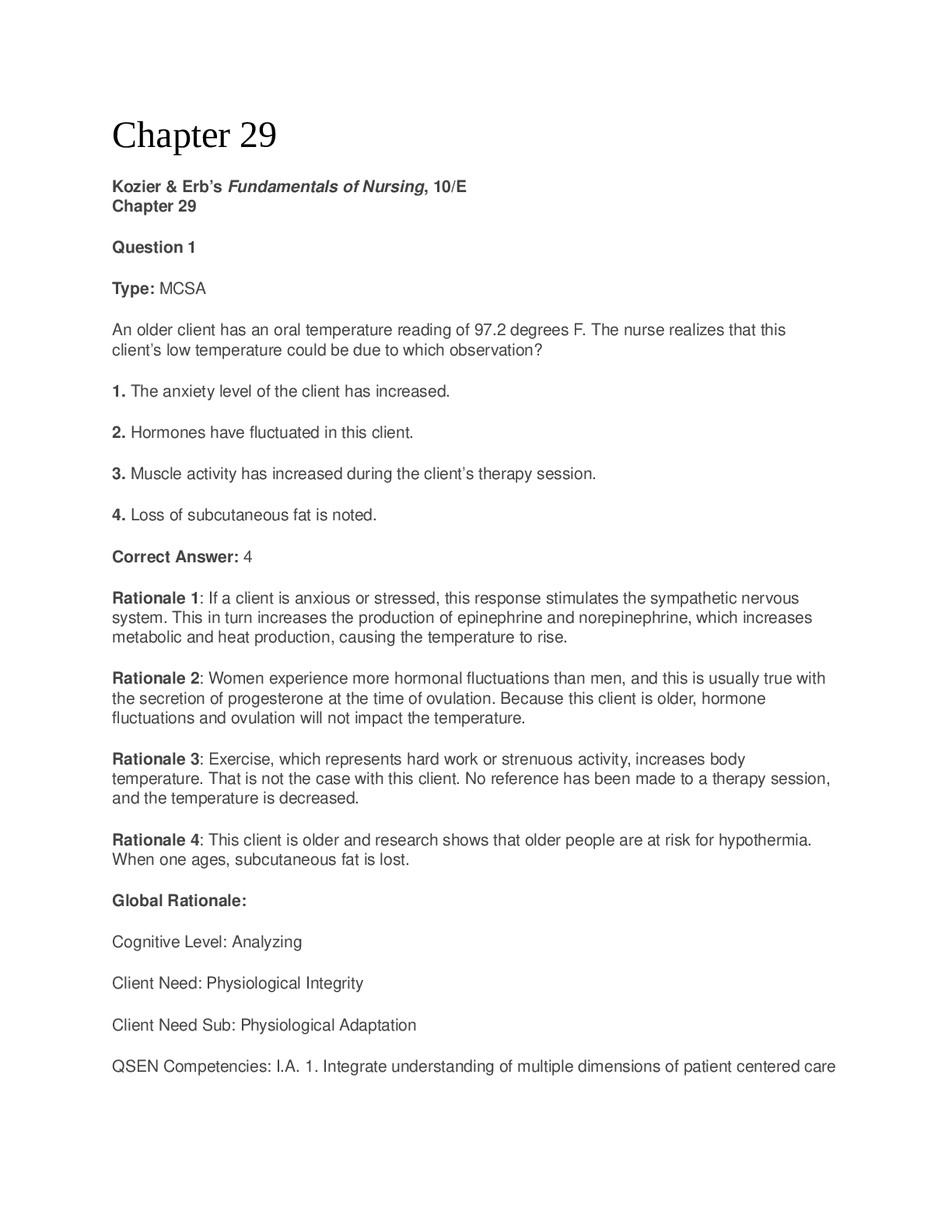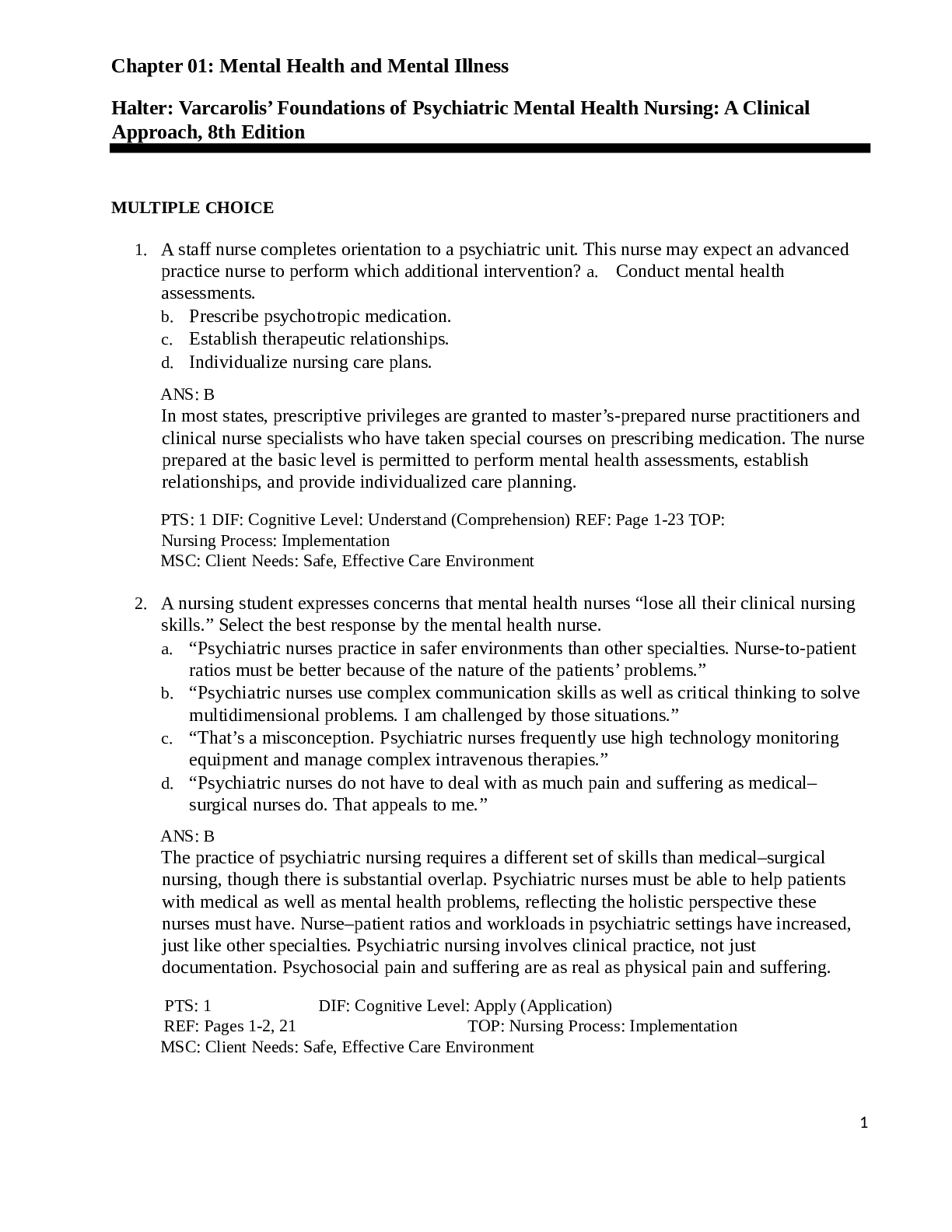*NURSING > TEST BANKS > Chemistry: The Central Science, 12e (Brown et al.) complete test bank / Chemistry: The Central Scien (All)
Chemistry: The Central Science, 12e (Brown et al.) complete test bank / Chemistry: The Central Science, 12th Edition Theodore E. Brown testbank
Document Content and Description Below
Chemistry: The Central Science, 12e (Brown et al.) complete test bank / Chemistry: The Central Science, 12th Edition Theodore E. Brown testbank-1) In the following list, only is not an example of matt... er. A) planets B) light C) dust D) elemental phosphorus E) table salt Answer: B Diff: 2 Page Ref: Sec. 1.1 2) What is the physical state in which matter has no specific shape but does have a specific volume? A) gas B) solid C) liquid D) salts E) ice Answer: C Diff: 1 Page Ref: Sec. 1.2 3) The law of constant composition applies to . A) solutions B) heterogeneous mixtures C) compounds D) homogeneous mixtures E) solids Answer: C Diff: 1 Page Ref: Sec. 1.2 4) A combination of sand, salt, and water is an example of a . A) homogeneous mixture B) heterogeneous mixture C) compound D) pure substance E) solid Answer: B Diff: 1 Page Ref: Sec. 1.2 5) A small amount of salt dissolved in water is an example of a _. A) homogeneous mixture B) heterogeneous mixture C) compound D) pure substance E) solid Answer: A Diff: 1 Page Ref: Sec. 1.2 6) Which one of the following has the element name and symbol correctly matched? A) P, potassium B) C, copper C) Mg, manganese D) Ag, silver E) Sn, silicon Answer: D Diff: 1 Page Ref: Sec. 1.2 7) Which one of the following has the element name and symbol correctly matched? A) S, sodium B) Tn, tin C) Fe, iron D) N, neon E) B, bromine Answer: C Diff: 1 Page Ref: Sec. 1.2 8) Which one of the following elements has a symbol that is not derived from its foreign name? A) tin B) aluminum C) mercury D) copper E) lead Answer: B Diff: 2 Page Ref: Sec. 1.2 9) Which one of the following is a pure substance? A) concrete B) wood C) salt water D) elemental copper E) milk Answer: D Diff: 1 Page Ref: Sec. 1.2 10) Which one of the following is often easily separated into its components by simple techniques such as filtering or decanting? A) heterogeneous mixture B) compounds C) homogeneous mixture D) elements E) solutions Answer: A Diff: 3 Page Ref: Sec. 1.2 11) Which states of matter are significantly compressible? A) gases only B) liquids only C) solids only D) liquids and gases E) solids and liquids Answer: A Diff: 1 Page Ref: Sec. 1.2 12) For which of the following can the composition vary? A) pure substance B) element C) both homogeneous and heterogeneous mixtures D) homogeneous mixture E) heterogeneous mixture Answer: C Diff: 2 Page Ref: Sec. 1.2 13) If matter is uniform throughout and cannot be separated into other substances by physical means, it is . A) a compound B) either an element or a compound C) a homogeneous mixture D) a heterogeneous mixture E) an element Answer: B Diff: 2 Page Ref: Sec. 1.2 14) An element cannot _ . A) be part of a heterogeneous mixture B) be part of a homogeneous mixture C) be separated into other substances by chemical means D) interact with other elements to form compounds E) be a pure substance Answer: C Diff: 2 Page Ref: Sec. 1.2 15) Homogeneous mixtures are also known as . A) solids B) compounds C) elements D) substances E) solutions Answer: E Diff: 1 Page Ref: Sec. 1.2 16) The law of constant composition says . A) that the composition of a compound is always the same B) that all substances have the same composition C) that the composition of an element is always the same D) that the composition of a homogeneous mixture is always the same E) that the composition of a heterogeneous mixture is always the same Answer: A Diff: 1 Page Ref: Sec. 1.2 17) Which of the following is an illustration of the law of constant composition? A) Water boils at 100°C at 1 atm pressure. B) Water is 11% hydrogen and 89% oxygen by mass. C) Water can be separated into other substances by a chemical process. D) Water and salt have different boiling points. E) Water is a compound. Answer: B Diff: 3 Page Ref: Sec. 1.2 18) In the following list, only is not an example of a chemical reaction. A) dissolution of a penny in nitric acid B) the condensation of water vapor C) a burning candle D) the formation of polyethylene from ethylene E) the rusting of iron Answer: B Diff: 2 Page Ref: Sec. 1.3 19) Gases and liquids share the property of . A) compressibility B) definite volume C) incompressibility D) indefinite shape E) definite shape Answer: D Diff: 1 Page Ref: Sec. 1.3 [Show More]
Last updated: 8 months ago
Preview 1 out of 800 pages

Buy this document to get the full access instantly
Instant Download Access after purchase
Buy NowInstant download
We Accept:

Reviews( 0 )
$17.00
Can't find what you want? Try our AI powered Search
Document information
Connected school, study & course
About the document
Uploaded On
Aug 26, 2021
Number of pages
800
Written in
Additional information
This document has been written for:
Uploaded
Aug 26, 2021
Downloads
0
Views
118


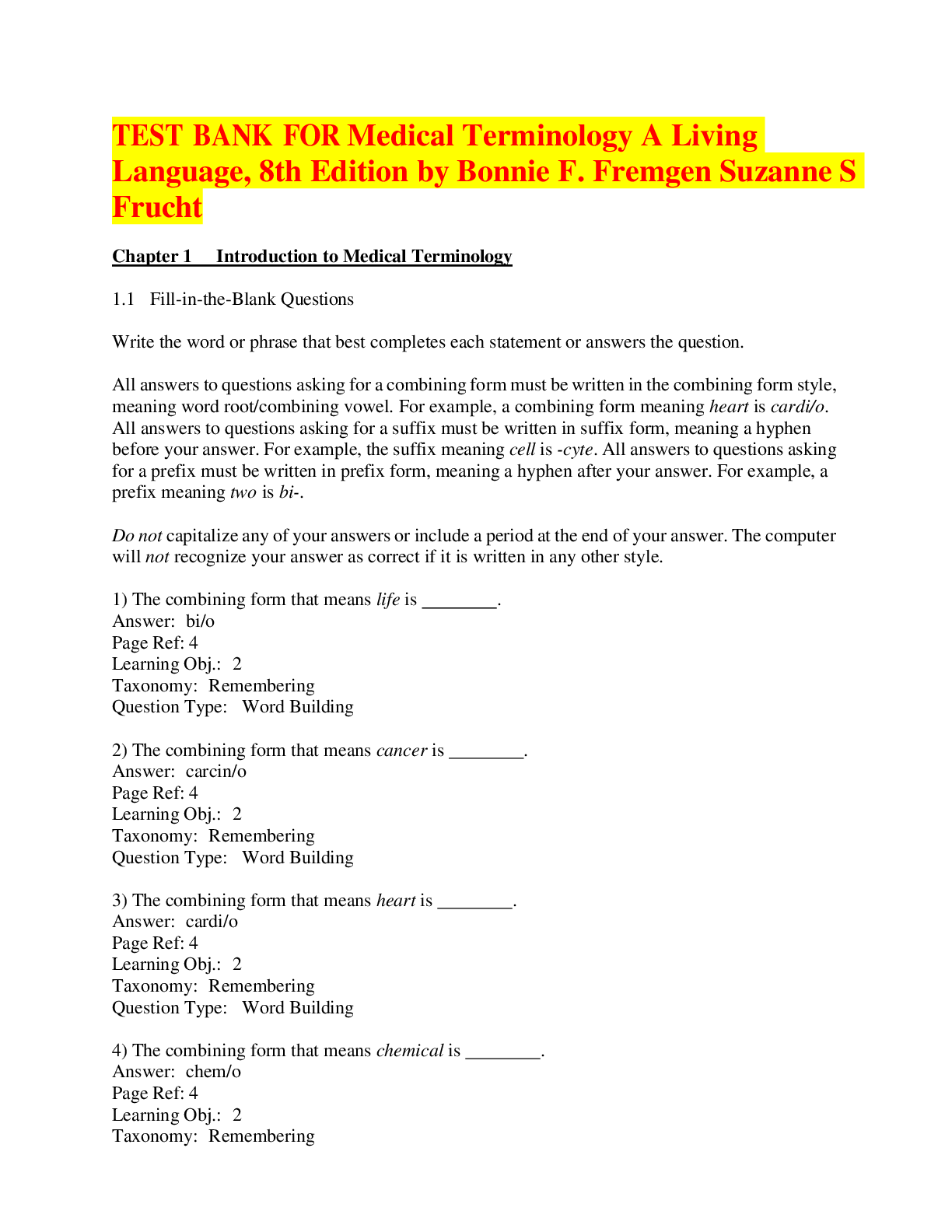
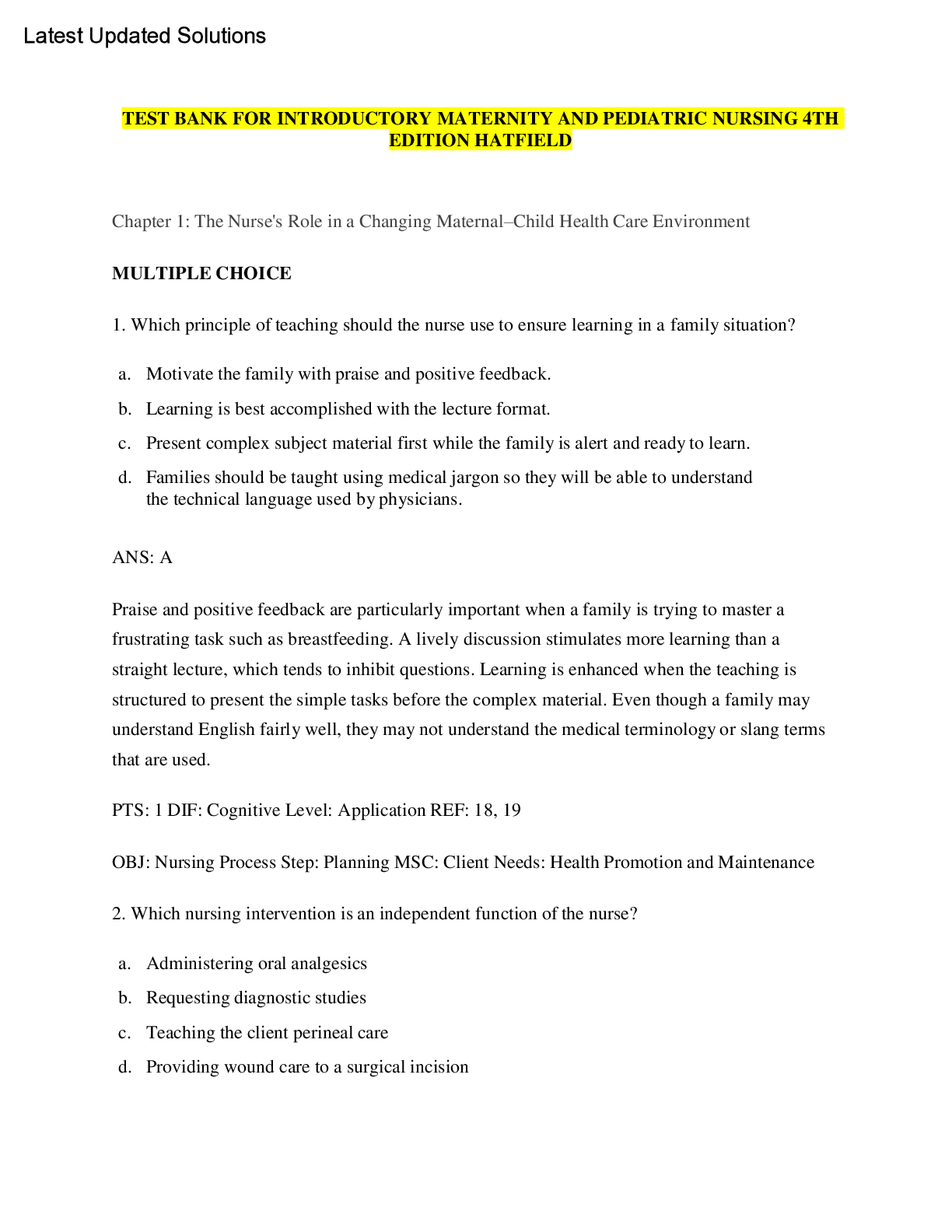

_compressed.png)
.png)
.png)

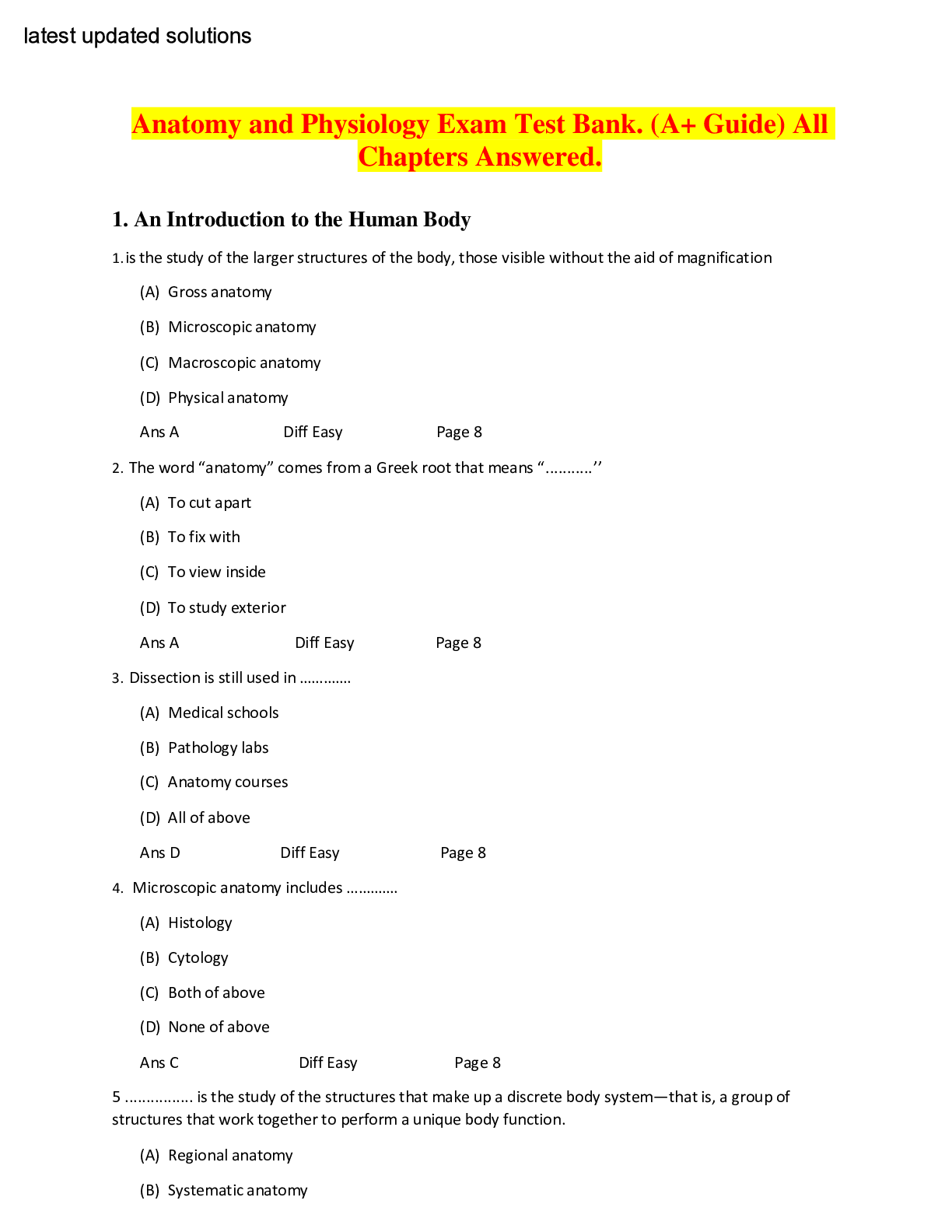
.png)

